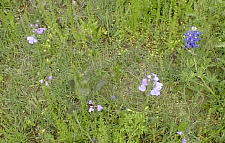W
|
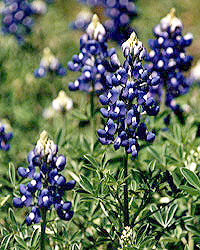 |
A
|
| The yard is situated in sandy soil on Post Oak Savannah, specifically Eastern Cross Timbers. Visible from satellites, it is a slender bed of sand which cuts north/south between Dallas and Fort Worth. The yard is approximately three city blocks east of the beginning of Grand Prairie. The following images were produced with an Olympus D-200L Digital Camera by Gene Hargrove. The first six pages were made in 1997. The seventh page marks the beginning of 1998. It deals with the part of early spring not covered in 1997 and with additional flowers that did not appear in 1997. In addition to the Olympus, a Sony Mavica Digital Still Camera MVC-FD7 is also being used. Special thanks go to Steve Windhager, founder of the Texas Society for Ecological Restoration, now at the Lady Bird Johnson Wildflower Center, for helping with the identification of these flowers. | ||
|
Texas Bluebonnet (Lupinus texensis) The Bluebonnet is the state flower of Texas. It exists elsewhere nevertheless under the name Lupine or Wolfbean. It was once believed that the plant stole nutrients from the soil. The Bluebonnets in my yard are descended from a single plant that I transplanted from the middle of my yard to a flower bed, where it bloomed five times in a single year. |
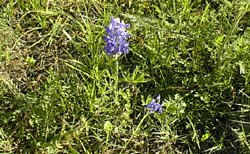 |
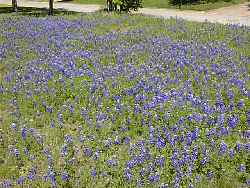 |
Two years after the single plant spread its seeds. They begin growing in the fall, building their root systems throughout the winter. A member of the pea family, the seeds develop in pods, which spread after the pods burst open. |
|
Texas Toadflax (Linaria
texana) New to the yard this year, it stands above the Bluebonnets on a slender stem up to 28 inches tall. It is pollinated by moths, bees,and butterflies. The leaves and stems are eaten by the Buckeye Butterfly. |
|
 |
Yellow Wood Sorrell (Oxaliz europeaea) (May to October) Also called Sour Grass, this clover-like plant with yellow flowers settles in below the Bluebonnets. The heart-shaped leaves of this European introduction are sometimes used sparingly in salads. |
|
|
Wine-Cup (Callirhoe
involucrata) A permanet resident of the yard, its blooms are shaped like red wine glasses. The plant is a perrennial and is generally pollinated by bees seeking nectar, who can frequently be found in the cup. It is also known as poppy-mallow. |
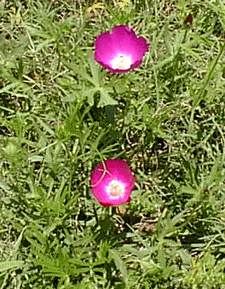 |
